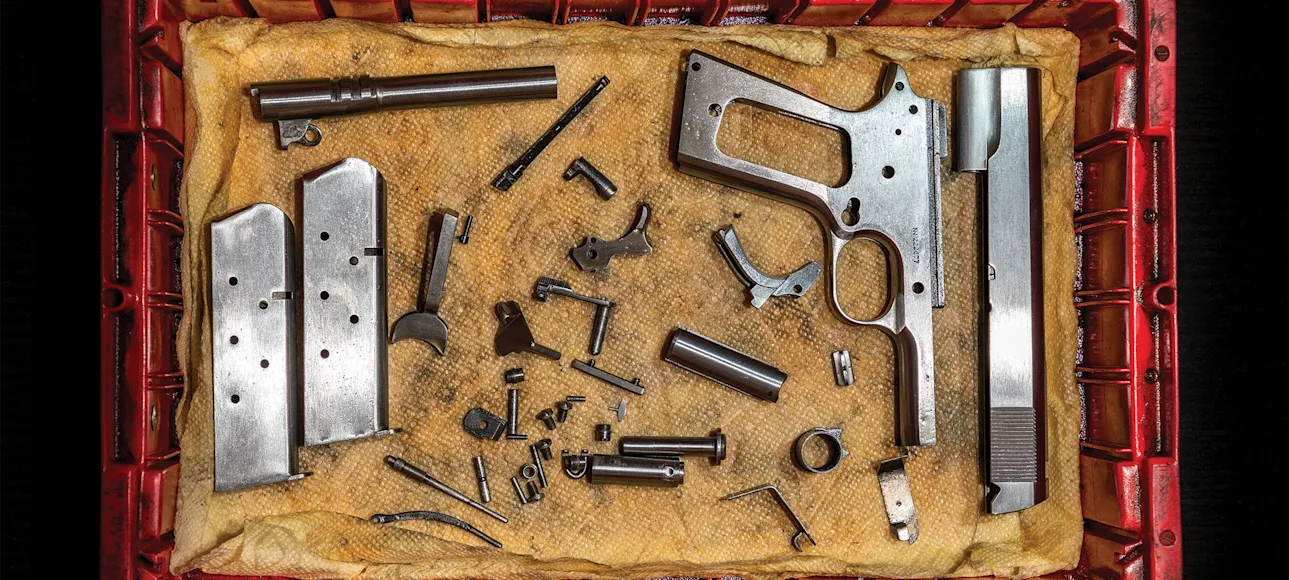_We may earn revenue from the products available on this page and participate in affiliate programs. Learn more ›
_
The fountain of youth for humans has yet to be discovered, but for firearms, it has been around since 1983, when an artist named Doug Turnbull began restoring old, classic guns for Creekside Gun Shop in Bloomfield, New York.
Among the discerning, the words Turnbull Restoration make the blood stir as Ferrari does for a sports-car nut, Fabbri for a lover of shotguns, or Randall for someone who dotes on knives. Turnbull and his 15 talented cohorts take the old, the battered, the neglected, and turn them to as good as new, or maybe a tad better. Turnbull Restoration guns—I swear to you—seem to pulse with inner light.
The prime candidates for a Turnbull restoration are elderly rifles, shotguns, and handguns that were fine to begin with
—Parkers, L.C. Smiths, Winchester lever actions, Colt Model 1911s, Peacemakers, and the like. Cheap guns—unless they have sentimental value—should not be restored. And firearms that have historical significance of any kind shouldn’t be touched, period. No cleaning. No minor repair. No nothing.
Learn how to upgrade your membership plan and get the new print magazine!
to be truly accurate, the restorer must know exactly how the gun was made and how to re-create those processes exactly. How did Colt produce Colt Royal Blue? What kind of wood was used in the grips of a 1950s-era Smith & Wesson 29? Do you charcoal-blue, rust-blue, or nitre-blue a particular gun? How do you color case harden using bone charcoal? How do you draw 75 years’ worth of oil sludge out of a piece of walnut?
It is an arcane body of knowledge, and perishingly few people know it. Doug Turnbull is one of them, and he is the best at it that there is. Or you could simply call what he does magic, and you would not be at all wrong.
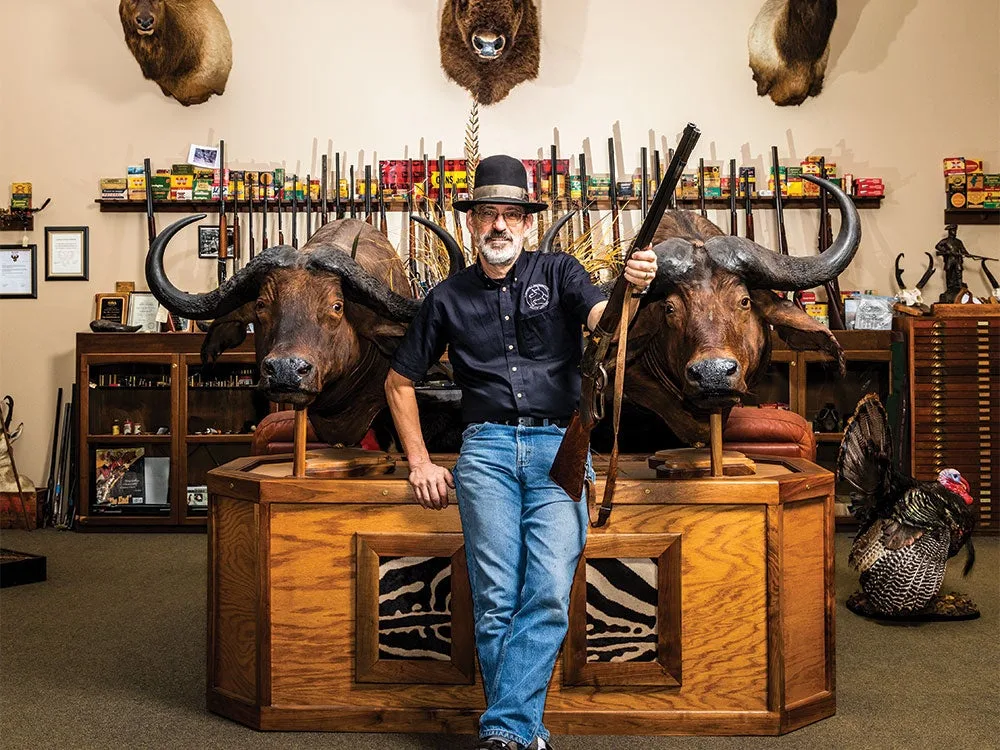
Andrew Hetherington
Doug Turnbull, the founder and CEO of Turnbull Restoration, poses in the company’s showroom in Bloomfield, New York. The real trophy here is the restored antique Winchester Model 1886 that he’s holding. The gun is chambered in his own proprietary .475 Turnbull cartridge.
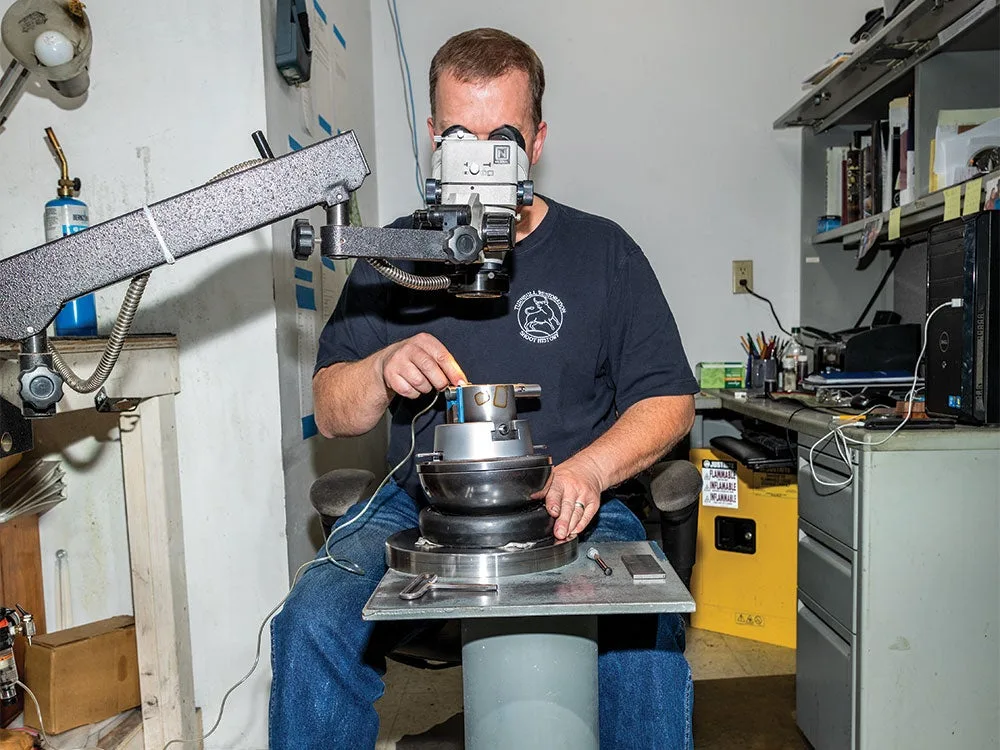
Andrew Hetherington
Tom McArdle, an engraver at Turnbull, works on a Colt single-action barrel. “We’re fortunate to have our own in-house engraver,” Doug Turnbull says. McArdle uses a modern air tool in his work, but also does some engraving the old-fashioned way—with a hammer and chisel.
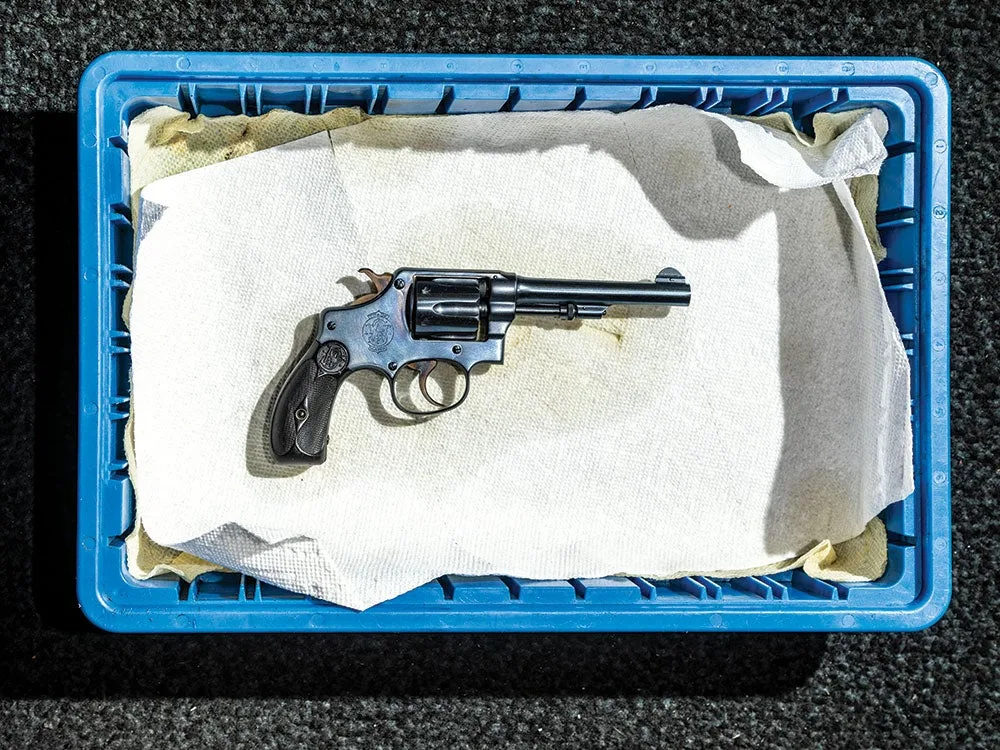
Andrew Hetherington
A Smith & Wesson double-action revolver awaits its turn. This gun will not be restored. Instead, the job simply involves disassembling the revolver, cleaning the parts, and putting it back together.

Andrew Hetherington
Stacks of collectors’ guides and historical reference manuals are located throughout the shop.
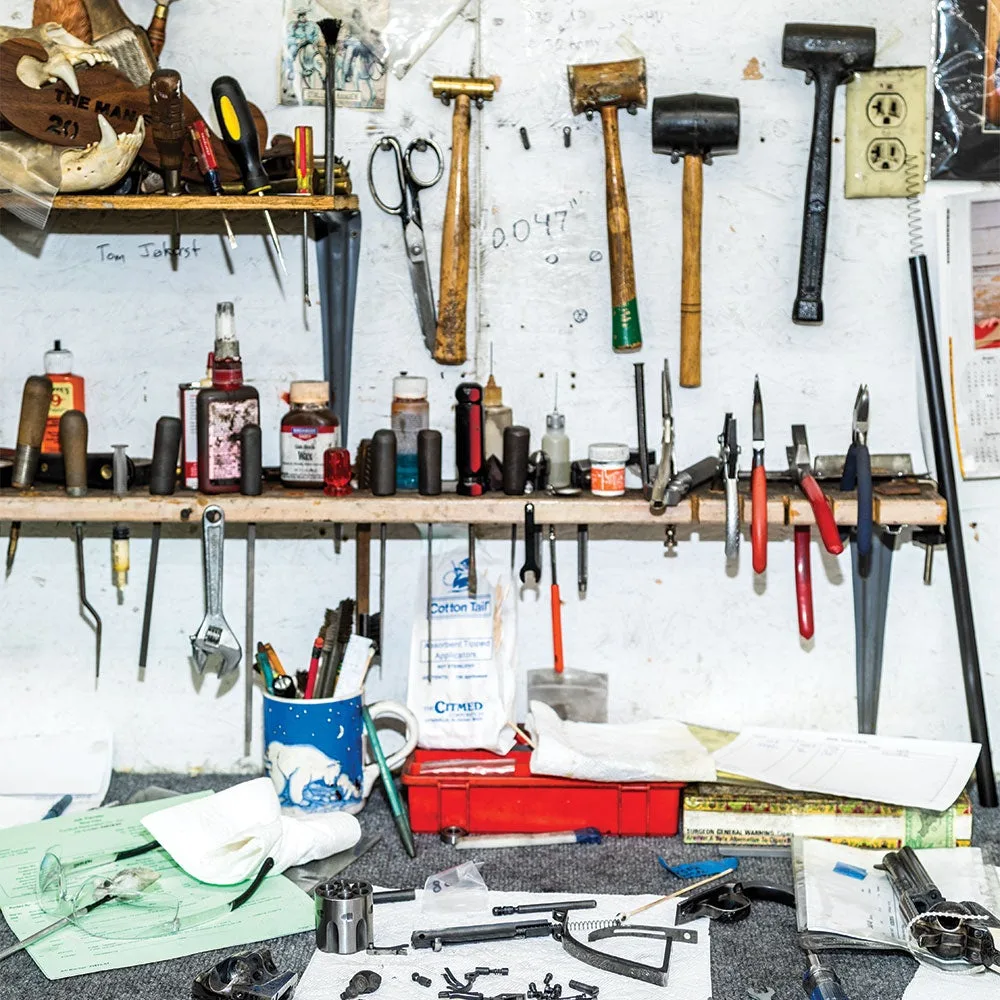
Andrew Hetherington
Tools of the trade, from a simple crescent wrench to specialized pliers and punches. This set includes everything needed to work on pistols, rifles, and shotguns.
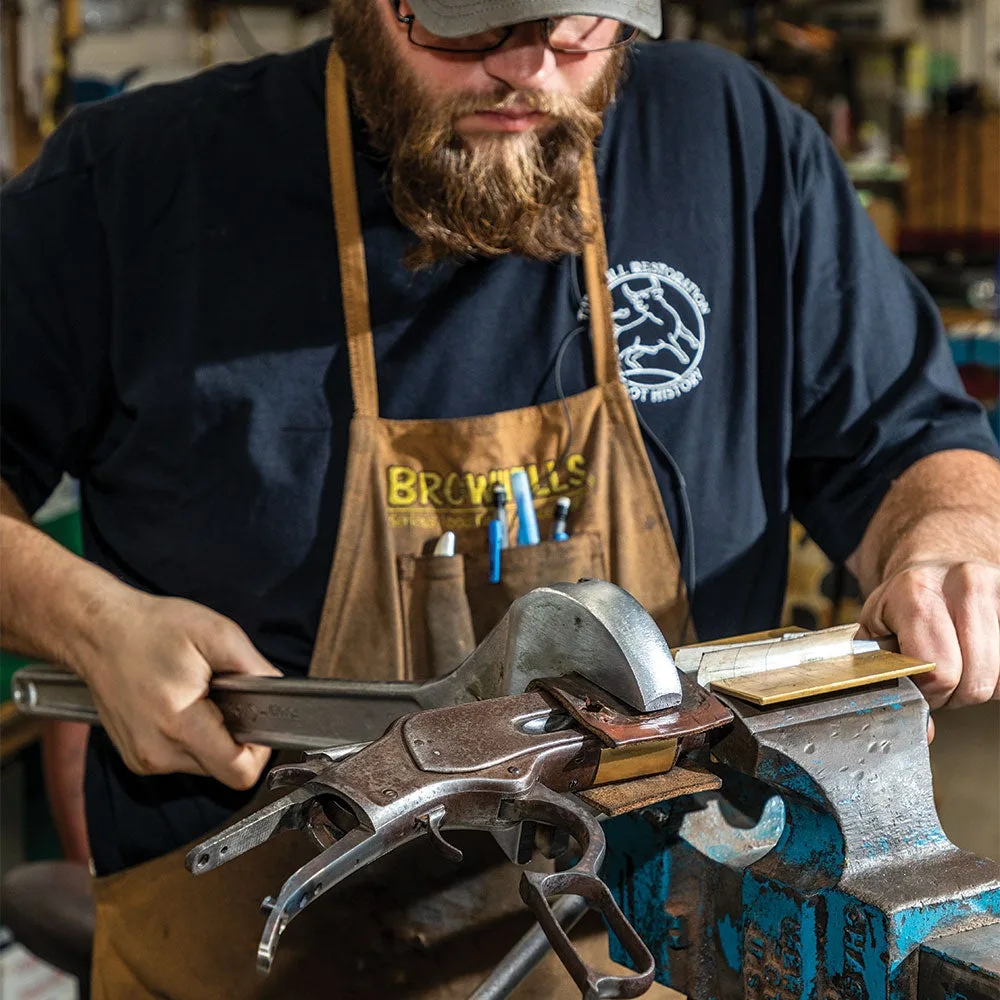
Andrew Hetherington
Jack Klapthor, a gunsmith, works on rebarreling a Winchester Model 1873, which will go through a complete restoration and be converted to a pistol-grip configuration.
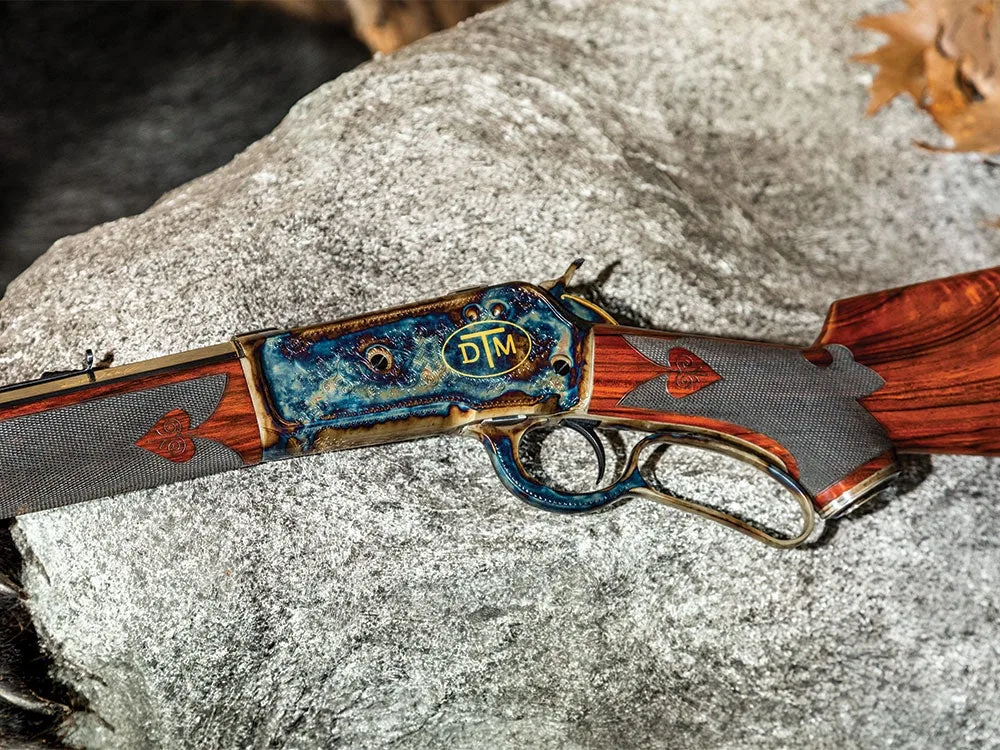
Andrew Hetherington
This is a newly manufactured firearm—one of a handful that Turnbull offers. The gun is based on a Winchester Model 71 and is available with several options, all inspired by the classic era of American lever guns and finished using period-correct methods.
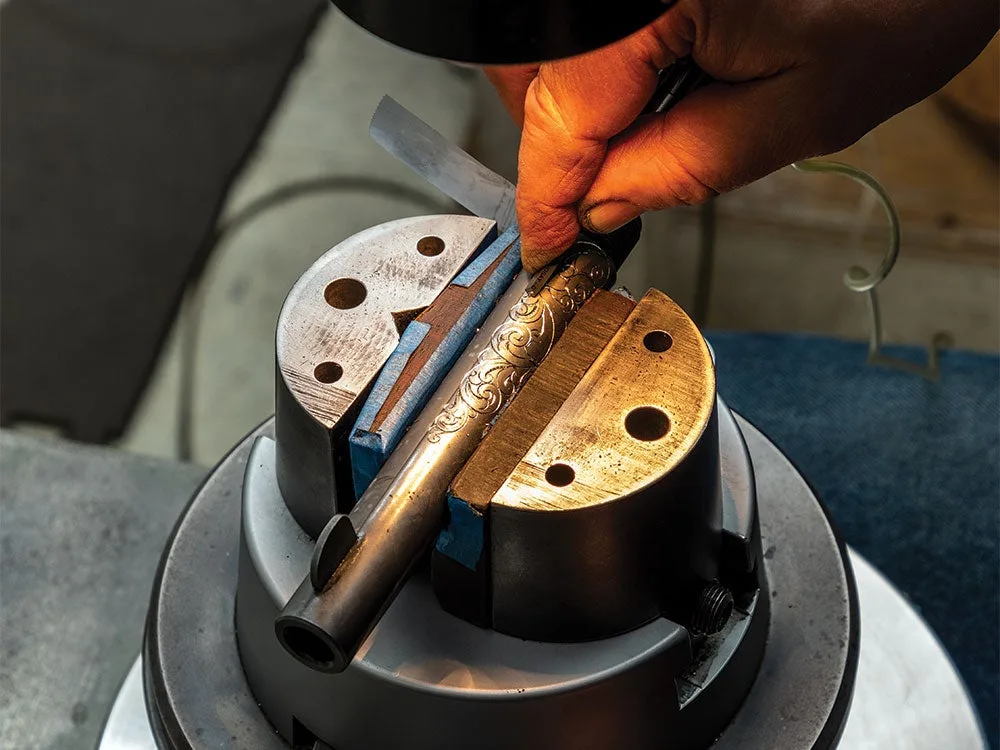
Andrew Hetherington
McArdle engraves the barrel of a Colt single-action revolver.
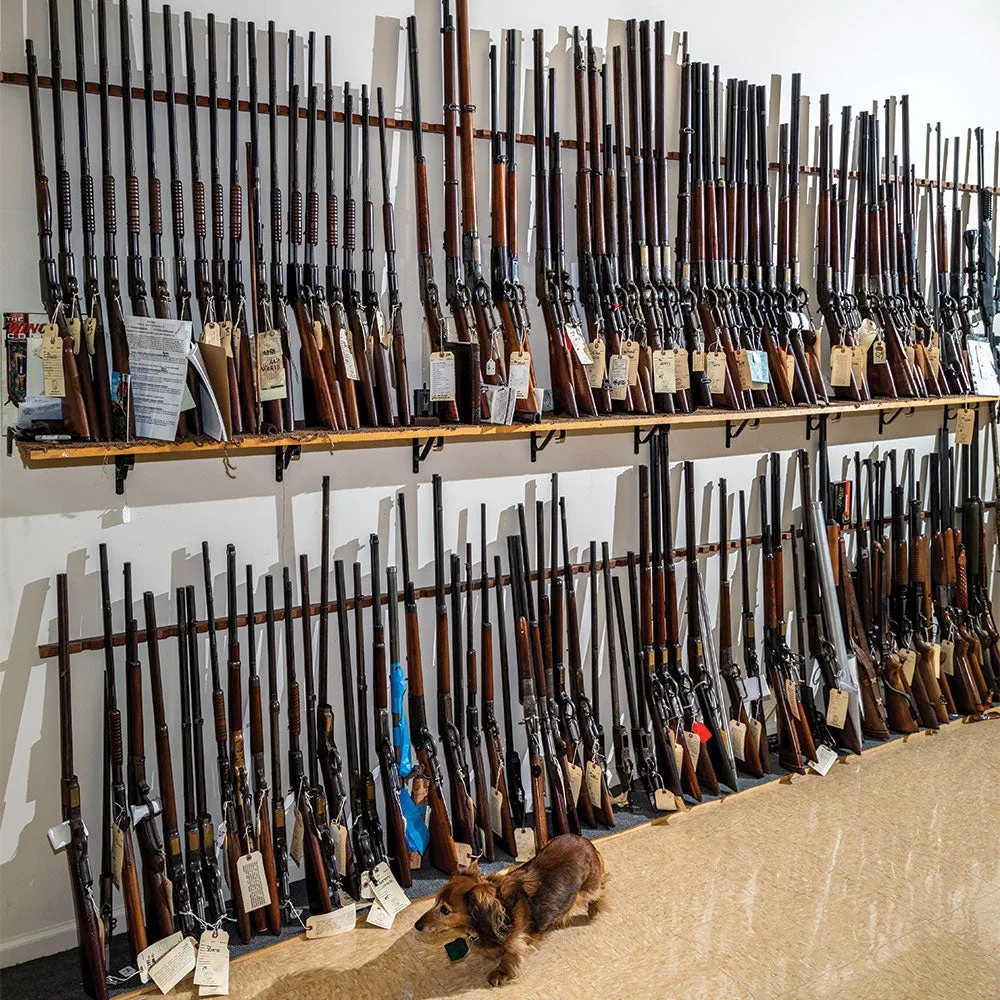
Andrew Hetherington
Daisy trots past racks in “The Library,” a room that holds Doug Turnbull’s personal collection of antique firearms, which are used as reference for restoration work. “It’s literally our portal to the past,” Turnbull says.
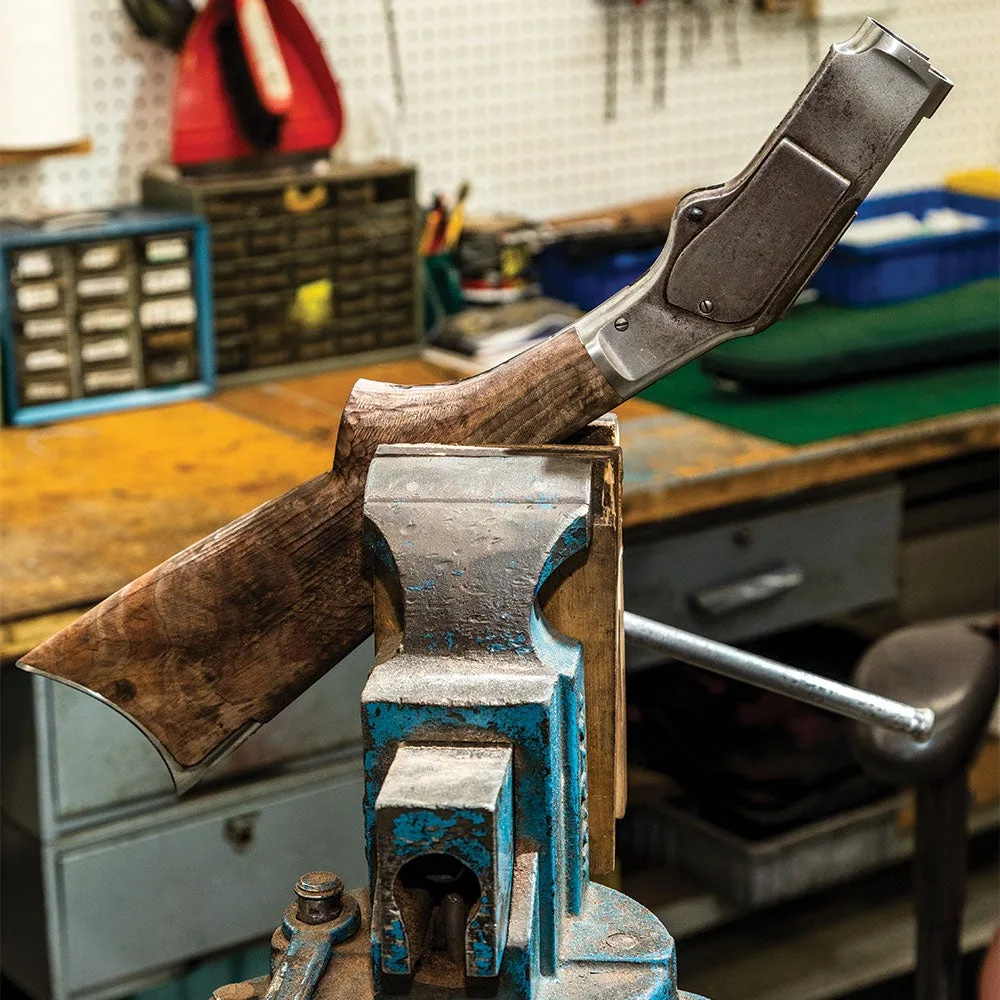
Andrew Hetherington
A Winchester Model 1873 will be restocked with American black walnut, 3x grade.
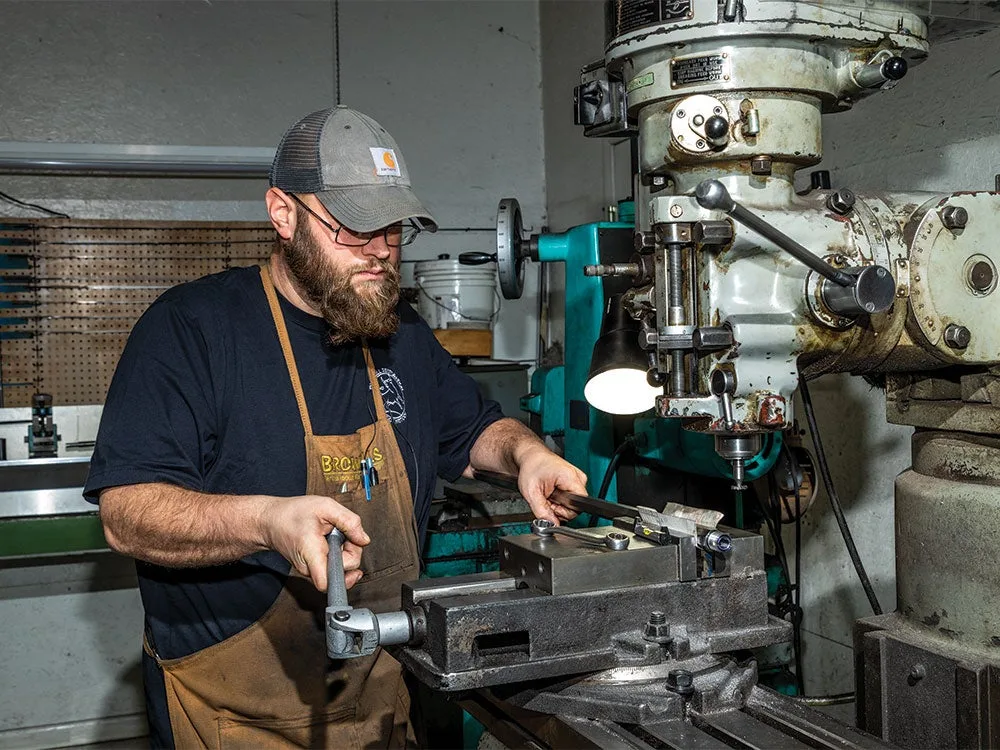
Andrew Hetherington
Klapthor sets up a barrel for a Model 1873 to make the extractor cuts. This older, hand-operated mill allows them to preserve as much of the hand-fit quality as possible.
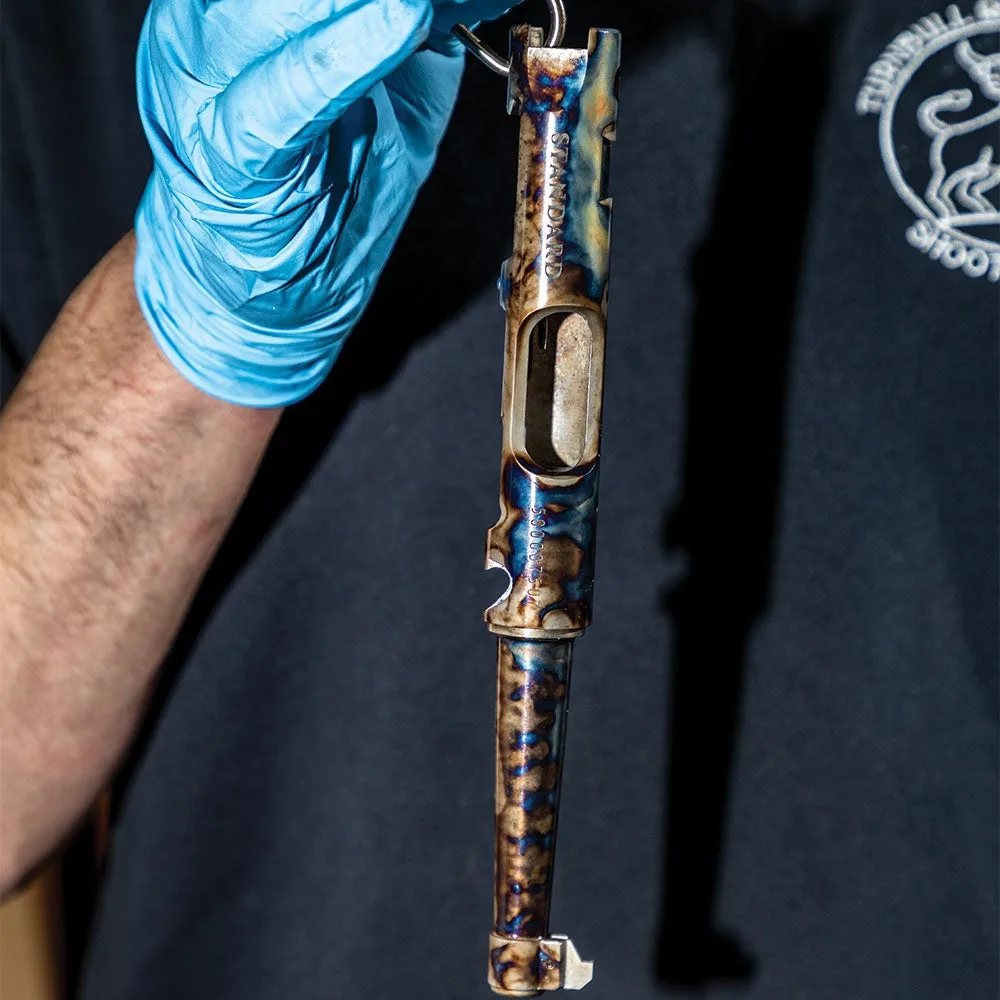
Andrew Hetherington
Keenan Whitmore, a metal finisher, works on a color case hardened barrel from a Ruger Mark IV Standard, a model in the Turnbull Finished series.
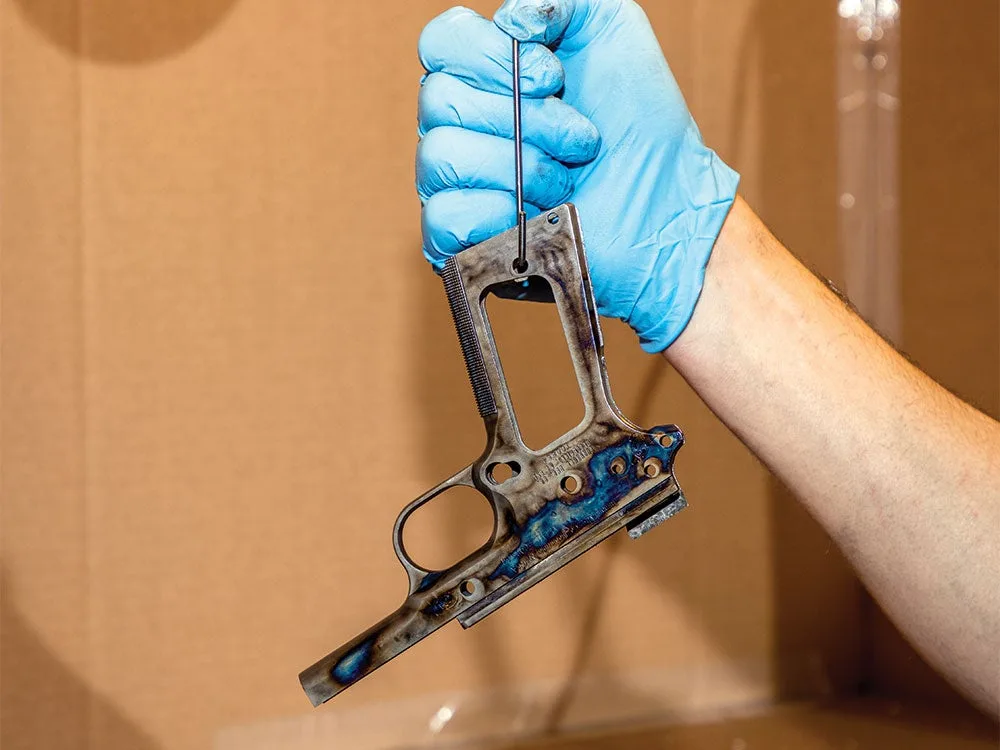
Andrew Hetherington
Whitmore holds the color case hardened frame of a custom-reproduced Turnbull Model 1911.
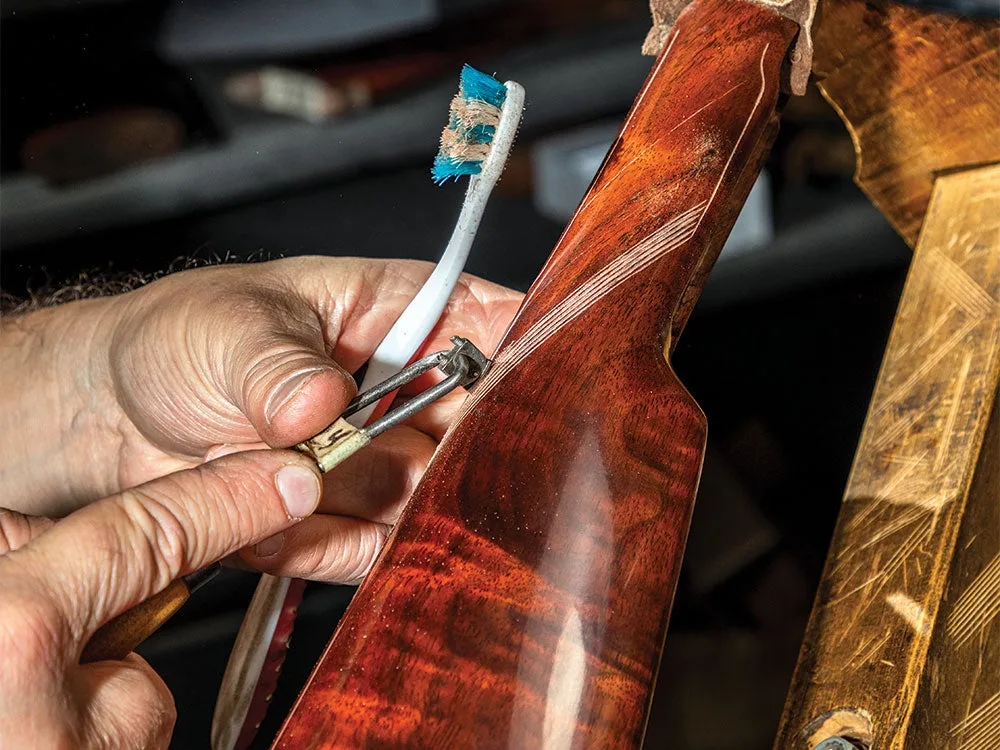
Andrew Hetherington
Ryan Power, a woodworker, checkers a standard H-pattern—24 lines per inch—into the grip of a Winchester Model 1890. All wood-finishing at Turnbull is done by hand.
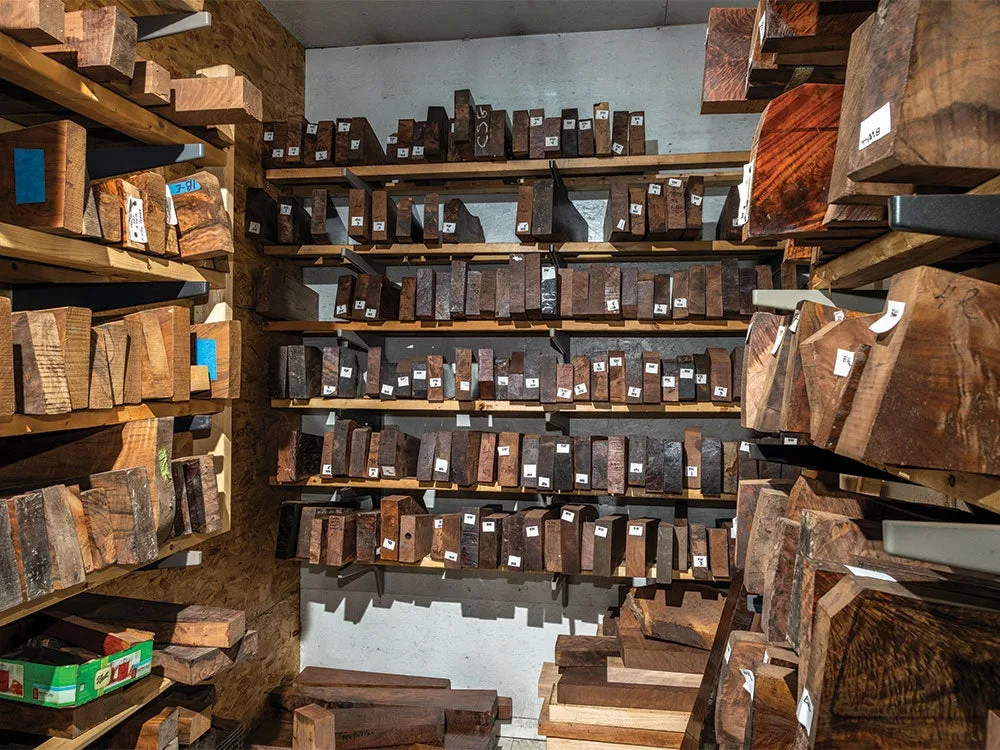
Andrew Hetherington
Welcome to the Wood Room. “This is our wood selection, where stock-makers assess and pick stock blanks for restoration projects,” Turnbull says. “Most of it is American black walnut, but there are some English walnut blanks too. Grades range from standard field grade on up to exhibition grades.”
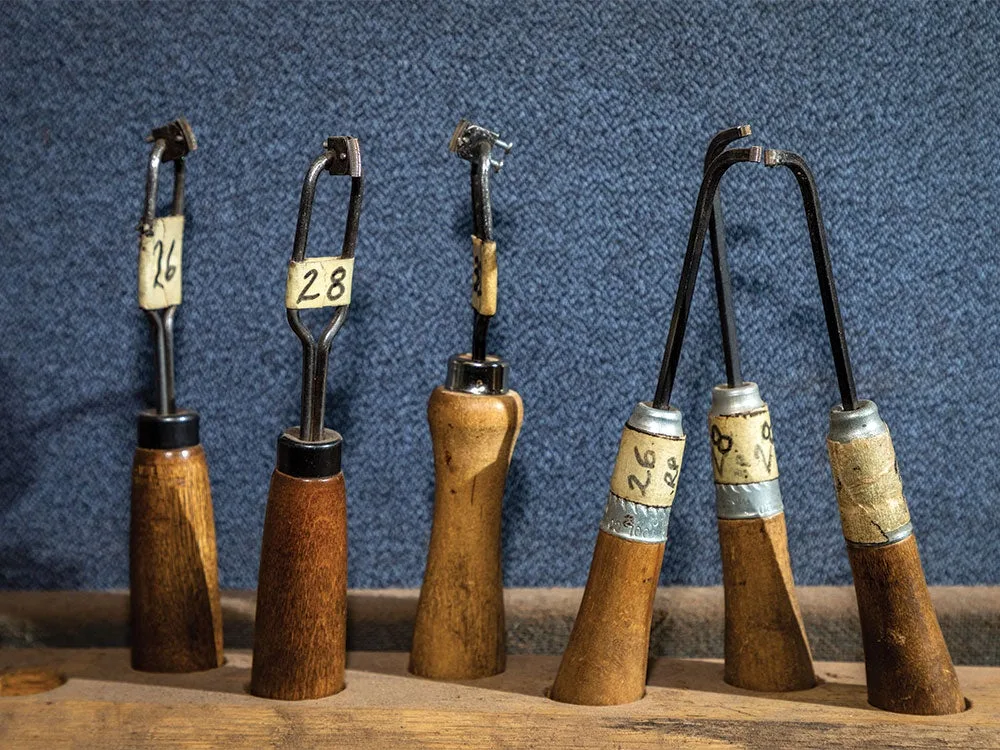
Andrew Hetherington
Labels on this selection of wood-checkering tools denote the number of lines, per inch, that each tool cuts. The first three are double-line cutters; the next three are single-line cutters.
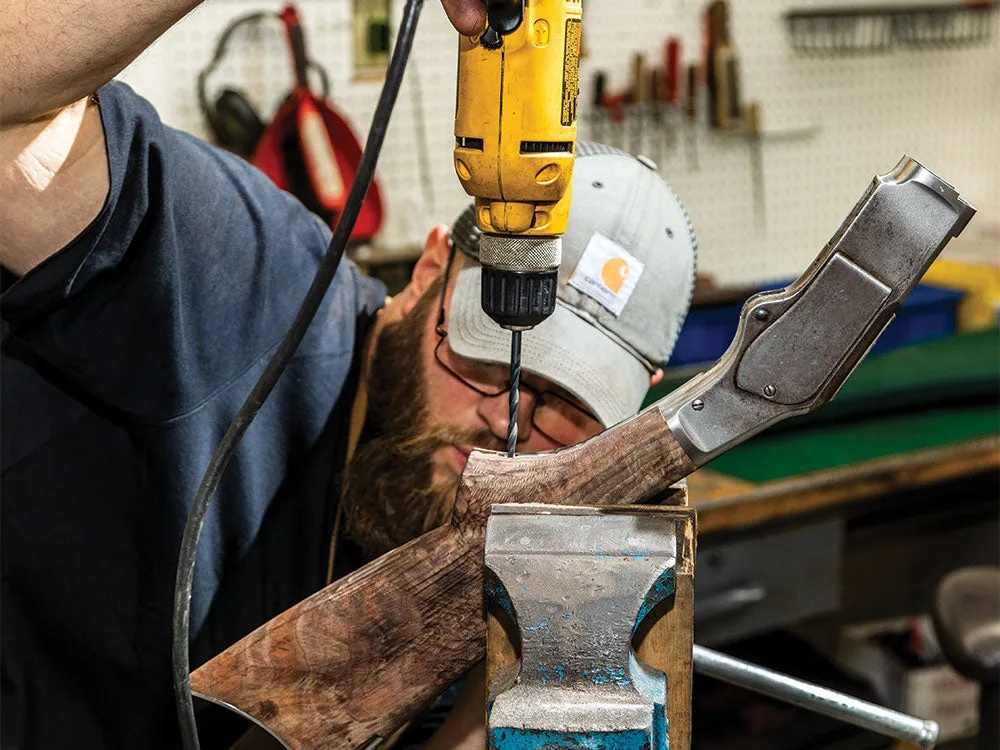
Andrew Hetherington
Klapthor drills the lower-tang wood screw into the stock of the same Winchester Model 1873 shown earlier in the story.

Andrew Hetherington
A library of roll dies used to stamp metal parts, such as barrels, frames, and slides. Each is one painstakingly crafted to create an exact replica of the original maker’s marks.
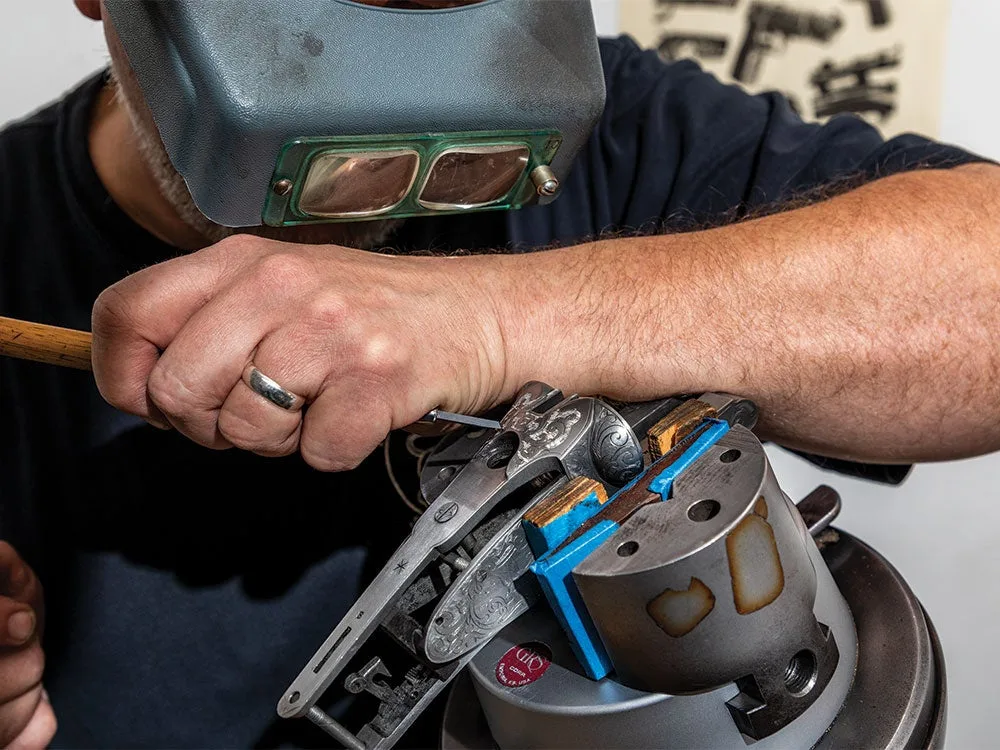
Andrew Hetherington
Using nothing more than a hammer and chisel, McArdle recuts the engraving on an L.C. Smith shotgun. Although this is a fairly simple design, the re-engraving will take about 16 hours of handwork to finish.
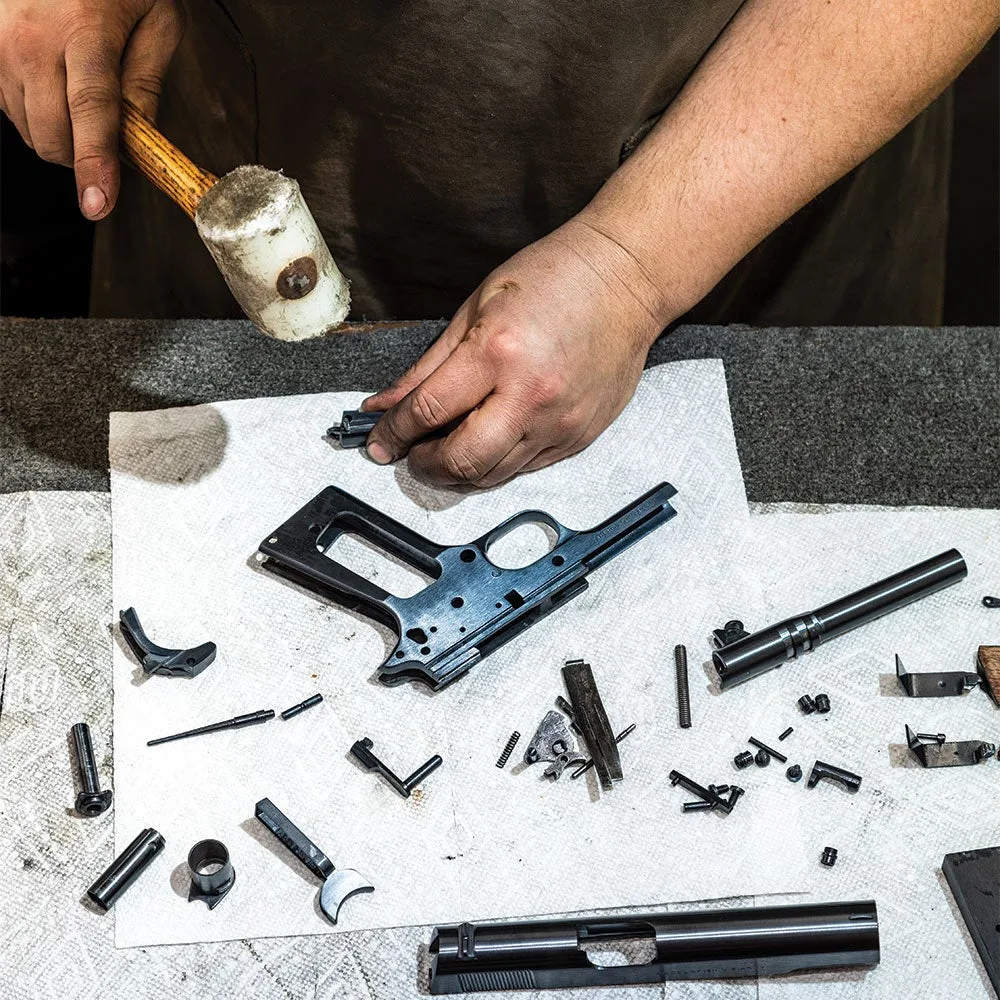
Andrew Hetherington
Gunsmith Mike Knowles, reassembling a restored Colt Model 1911, uses a nylon mallet to set the pin for a lanyard loop on the gun’s mainspring housing.
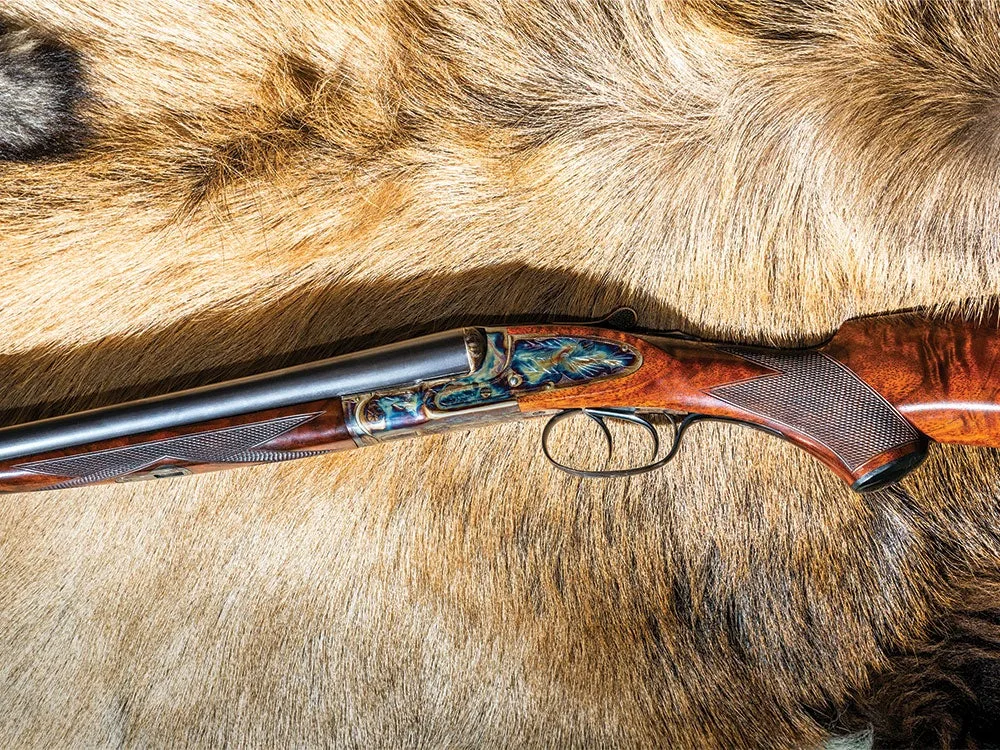
Andrew Hetherington
The full Turnbull Restoration treatment, including rebluing, recheckering, and the company’s signature color case hardening, restores the simple elegance of this 1920s-era L.C. Smith Ideal Grade 20-gauge double gun.
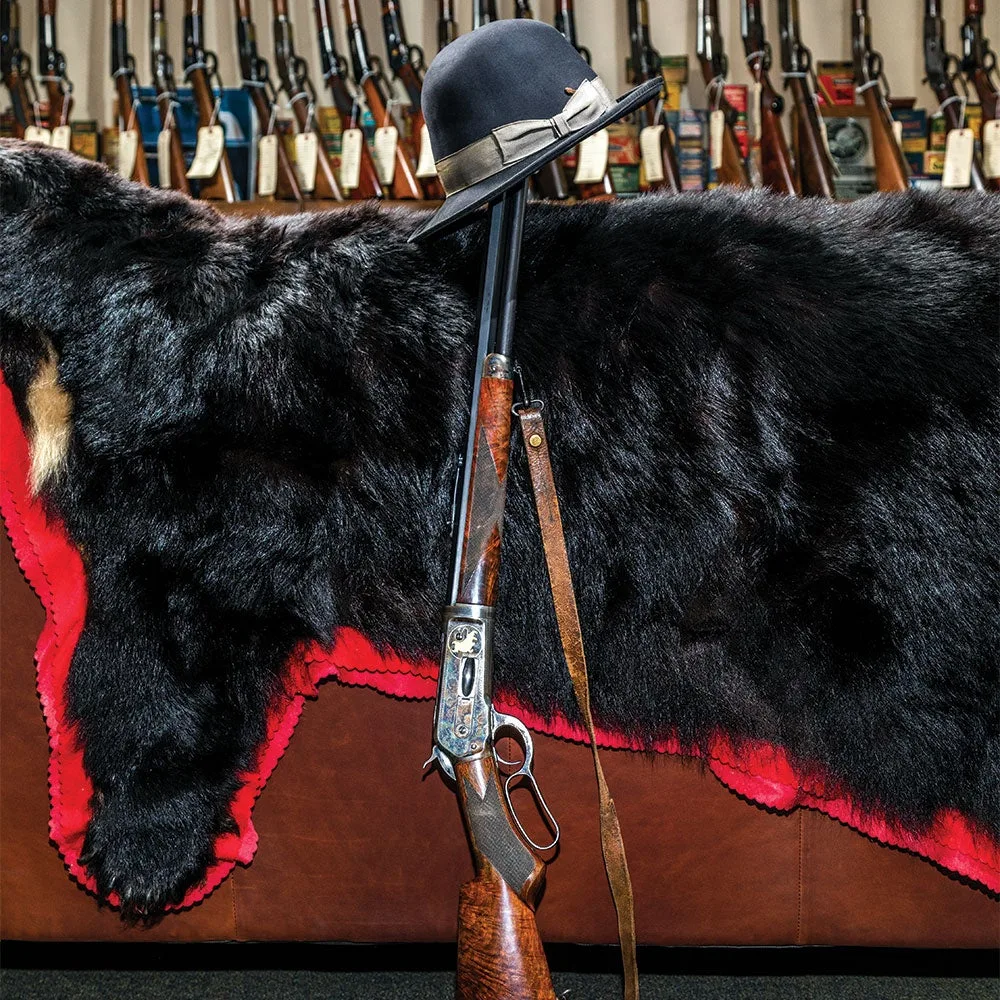
Andrew Hetherington
Doug Turnbull was here. In the world of fine classic guns, he is known by the quality of the work reflected here in his personal Winchester 1886 (circa 1888), which he restored and rechambered in 2007 and has since taken around the world, and by his trademark bowler hat.

